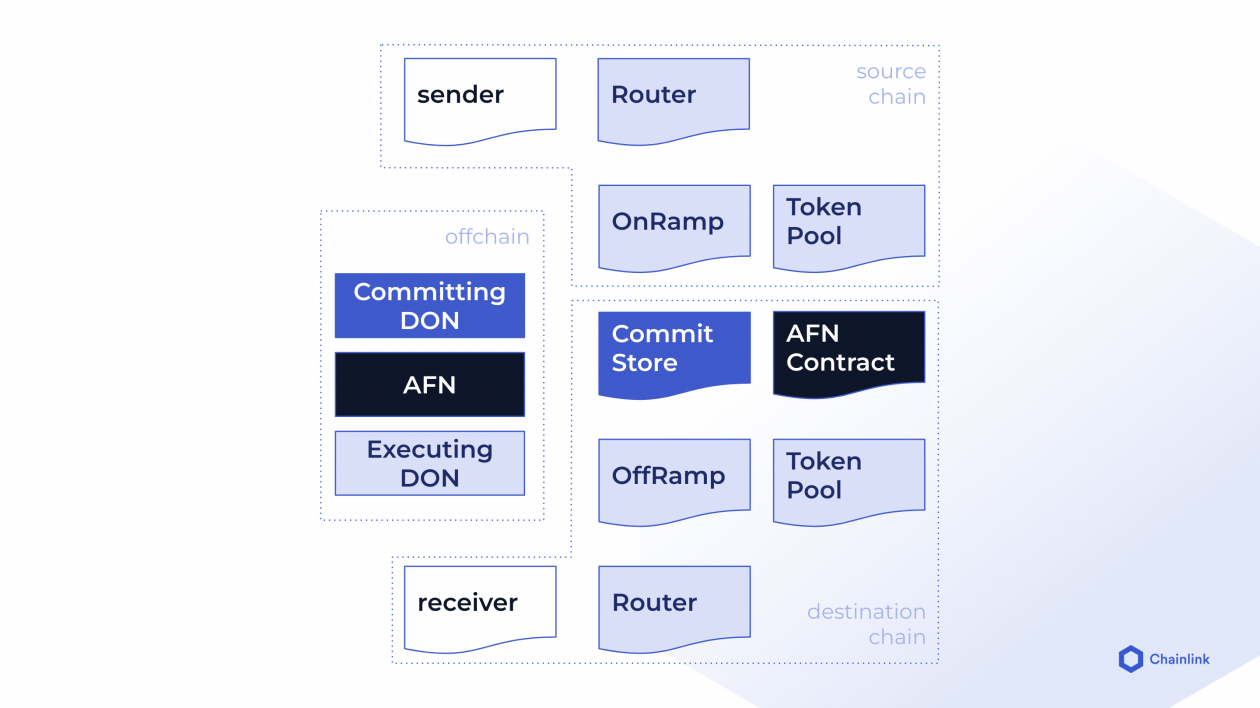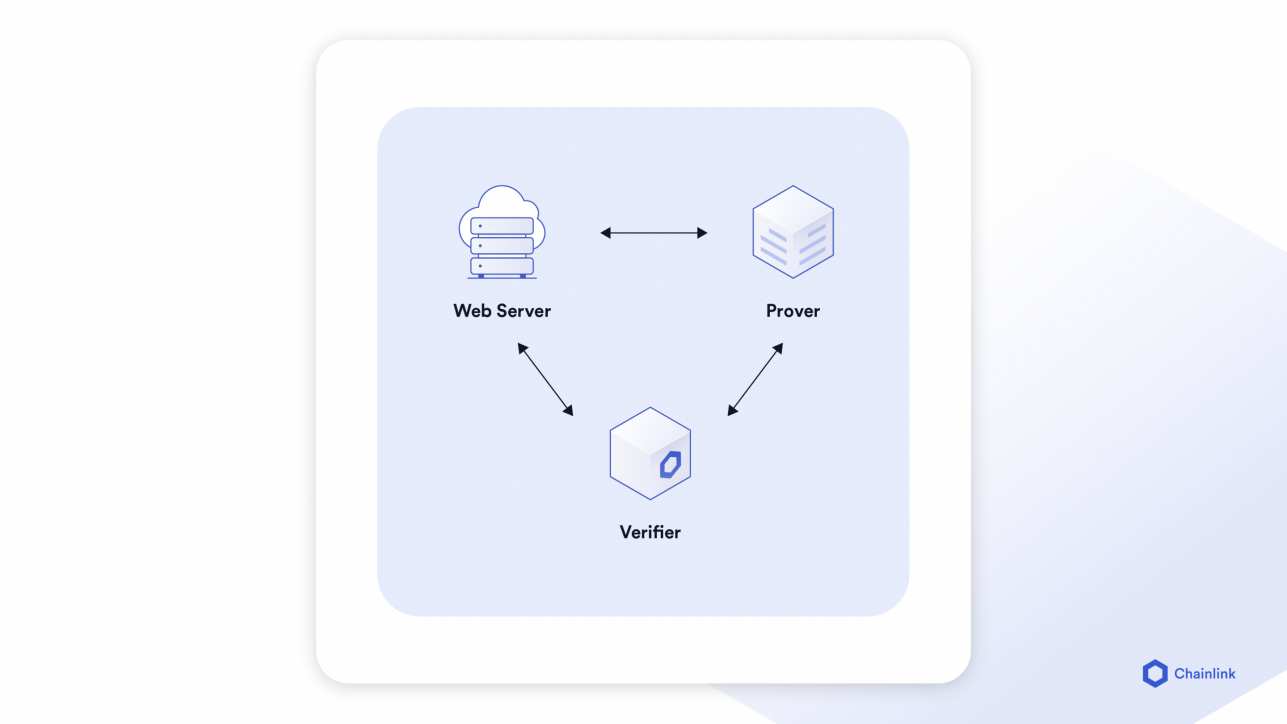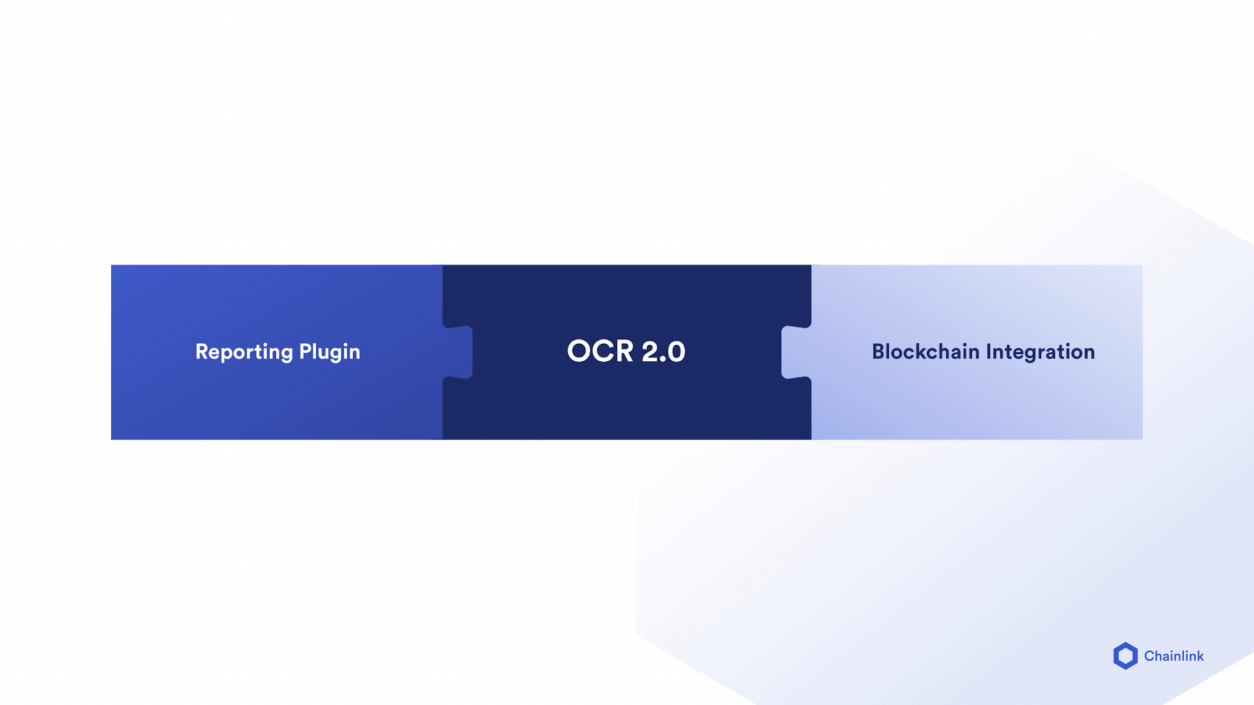
2022 SmartConMore than 150 guest speakers were invited and more than 100 speeches were shared. This conference will bring together the big names in the Web2 and Web3 industries to discuss how to promotetrust minimizationUsher in the next critical turning point.
To build a new era based on encryption technology requires not only our joint efforts, but also rigorous academic research and a focus on user and industry needs.
Hybrid Smart ContractHybrid Smart Contract, thereby accelerating Web3 innovation and making encryption assurance mainstream. Over the past year, the Chainlink Labs team has made major breakthroughs in several key research areas, including cross-chain messaging, privacy-preserving oracles, fair transaction ordering, and off-chain data aggregation.
Cross-Chain Interoperability Protocol (CCIP)
Cross-Chain Interoperability Protocol (CCIP)
Video link:https://youtu.be/speIh3ctygM
Cross-Chain Interoperability Protocol (CCIP)Cross-Chain Interoperability Protocol (CCIP), to establish an open source standard for cross-chain communication. CCIP aims to create a common open standard to help developers create secure services and applications, transmit arbitrary messages and tokens and initiate commands across multiple blockchain networks. In addition, CCIP also plans to integrate into a series of oracle services to achieve advanced cross-chain interaction.
CCIP guarantees end-to-end security by design, and is forward-lookingInteroperability, and provide developers with a smooth development experience. The CCIP infrastructure allows a message sender (sender) on the originating chain to send a message to a message receiver (receiver) on the target chain, and the message can contain data and/or tokens. In reality, many protocol instances can be parallelized, thus connecting multiple independent networks.
The infrastructure of CCIP consists of three layers, namely: the message layer (programmable pass bridge), the transport layer (CCIP core), and the decentralized oracle network (DON) based on the OCR2.0 protocol. In addition, the infrastructure also includes an Anti-Fraud Network (AFN), which supports each layer. External developers only need to develop the sender and receiver contracts, and all other components are included in the CCIP service, so developers can easily achieve cross-chain interaction through a unified interface.
image description

text
First, the sender will call the Router contract, which is a unified entrance to connect all target chains. The Router will charge a subscription fee to the sender contract and route messages according to the target chain and token type (note: each token has a dedicated token pool). It is worth mentioning that we have adopted a rate limit on token transfers to prevent large-scale attacks.
If not only tokens but also messages are sent, the Router will send the messages to the OnRamp contract on the target chain for preliminary verification. If validation passes, OnRamp emits an event containing the message and metadata. At this time, Committing DON (that is, the oracle machine running the OCR 2.0 protocol) screens out this event during the process of monitoring the initial chain, and waits for the end of the message event sent by OnRamp. Then, Committing DON will send an encrypted message to the Commit Store contract on the target chain. This message is the root hash value of a Merkle tree and is signed by a quorum of oracles.
A major feature of CCIP is the establishment of the Anti-Fraud Network (hereinafter referred to as AFN), which is an independent verification layer that is responsible for independently monitoring all other layers. If the AFN node detects any malicious behavior, it will automatically trigger the mechanism to shut down all cross-chain activities in an emergency. When the contract performs operations at any time, it will first check the status of AFN to determine whether the system is in an emergency shutdown state. It is worth mentioning that AFN only monitors public on-chain data, so its activities can be fully audited.
Cross-chain message transfers can now be performed. Executing DON contains many nodes running the OCR 2.0 protocol. Executing DON will wait until the message is submitted to the Commit Store contract and verified by AFN before starting execution. Then, Executing DON will send the execution transaction and encrypted proof to the OffRamp contract. OffRamp will verify the encrypted proof based on the content stored in the Commit Store, and confirm whether it has been verified by AFN. Finally, the Router on the target chain will charge a subscription fee to the receiver contract and connect all target chains uniformly.
In the speech,Lorenz demonstratedCross-chain "ping-pong" demo contract, the contract is inandandRinkeby testnetMessages are transmitted across chains.
In addition to an in-depth sharing of infrastructure details, Chainlink co-founder Sergey Nazarov and SWIFT's strategy director Jonathan Ehrenfeld Solé announced in a fireside chatSWIFTCCIP is being adopted in a proof-of-concept project. SWIFT messages can initiate on-chain token transfers via CCIP, which will enableMore than 11,000 institutionsCan access the blockchain network. In addition, Synthetix is also in its innovativeSynth Teleportersfirst level title
DECO
Video link:https://youtu.be/eJqZQ2_VBzo
DECO is a privacy-preserving oracle technology developed by Cornell University, and laterAcquired by Chainlink. DECO can implement complex application scenarios for smart contracts and protect the privacy of sensitive data.
The Chainlink oracle network currently transmits a rich variety of external data for the blockchain economy.As of Q3 2022smart contractsmart contract. DECO can unlock the data, functions and services of Web2, and connect them securely to the Web3 world while maintaining privacy. In addition, even if private data is not involved, DECO can also be used to prove the source of data for user verification.
"I firmly believe that if the potential of blockchain technology is to be fully realized, data such as user age, identity verification and credit score need to be transmitted to the chain smart contract, while ensuring data privacy." - Dahlia, Chief Research Officer, Chainlink Labs Malkhi
Chainlink Labs Chief Research Officer Dahlia Malkhi atPresentations at SmartCon 2022announced that DECO has entered the alpha testing stage and is currently working on a series of proof-of-concept projects with multiple partners. We have spent a lot of time and energy on researching and developing innovative zero-knowledge proofs, increasing the speed of proof creation and reducing memory usage, and advancing DECO from theoretical research to the alpha testing stage. In the future, we plan to open source DECO's core zero-knowledge engine, so that the entire research community can participate in the development and application of DECO.
image description

Three-party interaction of DECO.
Then, there is no need to communicate with the data source, but only the interaction between the Prover and the Verifier. At this point, Verifier has proof that the data is authentic, but it can only see the encrypted text. Depending on the specific application scenario, the following two results may occur:
If privacy is not required, Prover can provide the key to decrypt the data to Verifier. In this case, the app developer can transfer the data into the app and use DECO to prove the data origin.
If privacy is requiredzero-knowledge proofzero-knowledge proof, to create claims without revealing the content of the data. In this case, app developers can input privacy-preserving claims into the app, and these claims are verified by DECO.
Chainlink Labs recently launched a series of proof-of-concept alpha tests with several partners to verify the feasibility of DECO in various smart contract application scenarios, including:
Low Mortgage Loan -Chainlink Partners with Teller to Launch Proof-of-Concept Project, using DECO to create zero-knowledge proofs for off-chain bank account balances, and use the proofs for on-chain low-mortgage loans while protecting data privacy.
digital identity -PhotoChromicDigital identity solutions are being developed to help apps filter real-world users by proving that users have a social media account.
Proof of social status/follower status——CliqueA solution is being developed to prove that a user has commented on a content creator's tweet or is following a content creator on Twitter, without revealing the user's Twitter account information.
system of record—BurrataA prototype was shown at SmartCon 2022 that would allow Web3 users to identify themselves through Burrata, a data provider that accesses Web2 APIs. Burrata shared a home rental use case. Users need to verify their identity and sign a temporary rental agreement before renting a house. Burrata can access the identity authentication platform and document signing service through DECO, without disclosing any private data to the blockchain or oracle, only need to publish claims about private data.
first level title
Fair Sequencing Service (FSS)
Video link:https://youtu.be/uuu23oqnzck
FSS is a decentralized transaction ordering solution designed to reduce the adverse impact of maximum extractable value (MEV) for smart contract systems. MEV has different forms, such as arbitrage opportunities between DEX and ordinaryDEXThe transaction initiates a front-running attack, etc. MEV causes unnecessary transaction slippage, affects user experience, and imposes a hidden tax on users. It is estimated that the current total MEVAbout $675 million, which is a conservative estimate, accounting for 10% of digital asset transaction volumea small part。
FSS aims to achieve fairer transaction ordering without modifying the existing infrastructure by building a top-notch solution. The design concept of FSS is to improve the fairness of transaction ordering, reduce transaction costs and reduce/eliminate data leakage.
Ari Juels, Chief Scientist of Chainlink Labs, talked about smart contract transaction ordering at 2022 SmartCon, and shared how FSS has been since first appearing onChainlink 2.0 White Paperdevelopments since then.
The biggest feature of FSS is the establishment of two key transaction ordering principles, namely: "secure causal ordering" and "temporal ordering". "Security sorting based on causal order" first encrypts transactions to hide transaction details; and uses DON to sort transactions, and then decrypts and executes them after sorting. Therefore, the transaction payload is encrypted, and nodes cannot view the content before ordering. "Sorting based on chronological order" ensures that the oracle is based on the "first-in, first-out" (first-in, first-out) principle, and the transactions received first are ranked first.
automated market makerautomated market maker(AMM) demonstrated a complete FSS prototype. In the demo, Szalachowski used FSS to avoid sandwich attacks (Note: Sandwich attacks refer to attackers inserting malicious transactions before and after ordinary transactions to gain improper profits).
Suppose Alice wants to buy a TOKEN worth 100 ETH, and 1 TOKEN is worth about 1 ETH. The attacker can see the transactions in the transaction pool (note: the transaction pool stores the transaction queue that has not been confirmed), and buy a large number of TOKEN passes to drive up its price. Then, the attacker executes Alice's buy order, pushing the price up again, and the final execution price of Alice's buy order is higher than the originally set price. In the end, the attacker sold the TOKEN to exchange for ETH, realizing a risk-free profit in an atomic transaction, and the only person who lost was Alice.
first level title
Off-chain reporting (OCR 2.0)
Video link:https://youtu.be/XKiLkmwVaYA
OCR (Off-Chain Reporting)The protocol (OCR 1.0) is an extended upgrade to Chainlink Data Feeds, which uses a peer-to-peer network to aggregate data off-chain and reduces the on-chain gas cost of creating tamper-proof oracle reports. OCR 1.0 aggregates the data of all nodes off-chain into an oracle report, and then submits the report to the chain through a node. The data and signature of each node can be verified on the chain.
Since its release in early 2021, OCR 1.0 has beenChainlink Data Feedsandcertificate of reserve、Chainlink VRFandAutomation. At the same time, the smart contract ecology is gradually developing in the direction of multi-chain.
image description

OCR 2.0 can be reused, and the service and blockchain components can be easily replaced.
OCR 2.0 uses Reporting Plugin to implement the logic of specific products, and is executed by DON's OCR 2.0 framework. Almost all blockchains can access all Chainlink services as long as they integrate the Reporting Plugin interface.
first level title
Always at the forefront of blockchain research
Blockchain research involves some very complex and challenging problems. We need to go beyond the scope of pure theoretical research while solving these problems, and implement them in practical application scenarios to generate value in the real world. In addition, another feature of blockchain research is that it spans multiple disciplines, covering various fields such as computer science, economics, game theory, and mathematics, so it is particularly attractive to researchers.
Chainlink Labsencrypted factsencrypted factsCreate a more economically equitable world. If you are a researcher and are interested in collaborating with us, pleasecontact us。
If you are interested in learning more about blockchain research, please log inSmart Contract Research Forum(https://www.smartcontractresearch.org/) join the discussion. If you want to know more about Chainlink and Chainlink ecology, please subscribeChainlink newsChainlink Official TwitterChainlink Official Twitteraccount.



